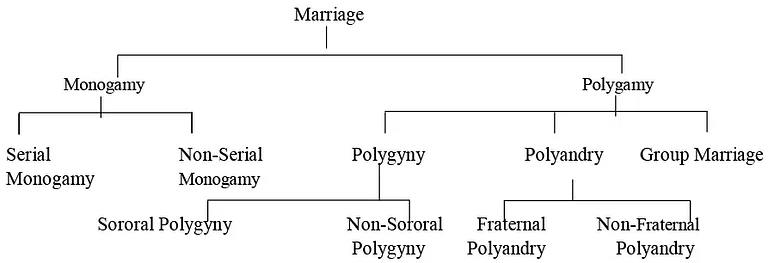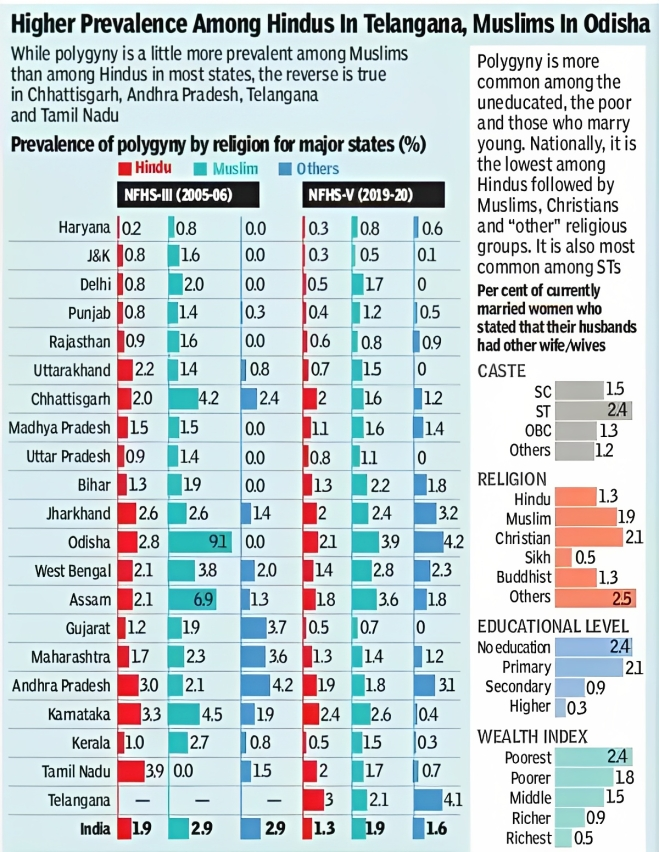Free Courses Sale ends Soon, Get It Now


Free Courses Sale ends Soon, Get It Now



Copyright infringement not intended
Context: The State Government of Assam will appoint an "expert committee" to investigate whether the state legislature has the authority to prohibit polygamy. This committee will be comprised of legal professionals and academicians.
Polygamy
About
History of Polygamy in India
In the Pre-Colonial era
In the Colonial era
In the Post-Colonial era
Causes of Polygamy in India
Religion
Culture
Economics
Politics
Social Pressures
Personal Preferences
Consequences of Polygamy in India
For Women
For Children
For Society
Economic impact
National Family Health Survey (NFHS) 2019-20 on Polygamy

Conclusion
|
PRACTICE QUESTION Q. Polygyny poses several challenges for society and the women involved, such as discrimination, domestic violence, health risks, and legal issues. How can India address these challenges and ensure the rights and dignity of all women in polygynous marriages? What are the possible ways forward to reduce or eliminate polygyny in India? |
© 2024 iasgyan. All right reserved